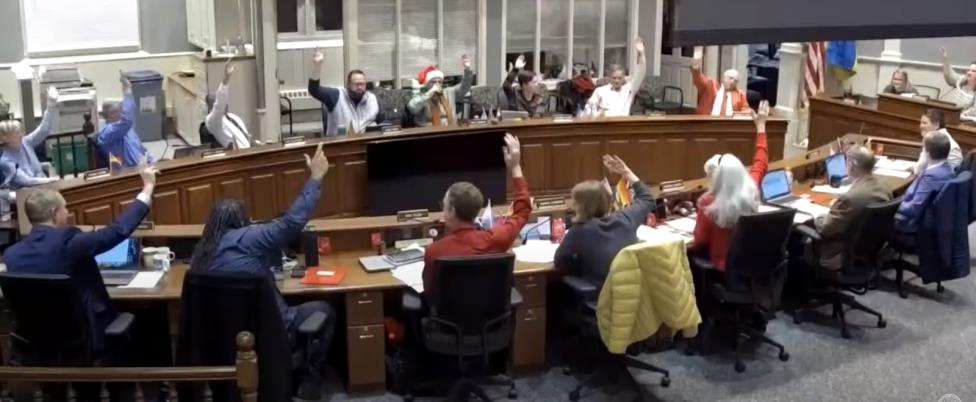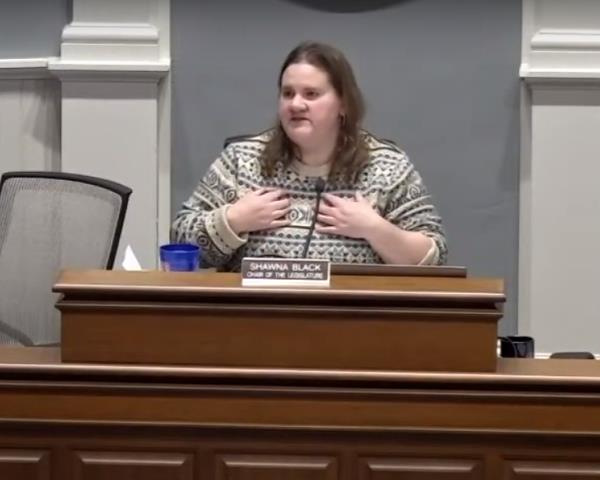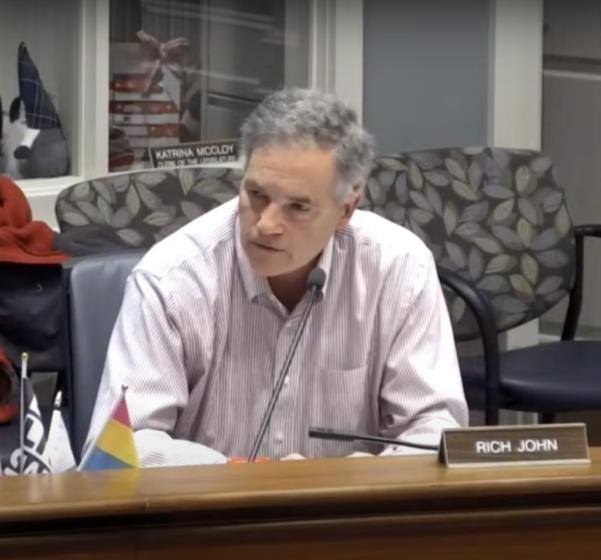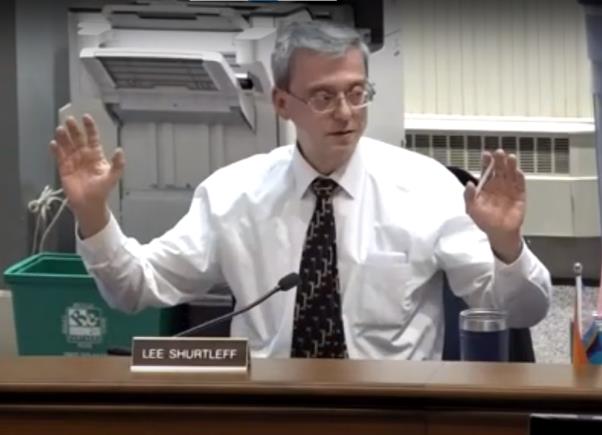Compromise floated toward flycar funding fairness

by Robert Lynch, December 21, 2023
It’s called “Cost Sharing Model 6.” That’s its working title. We’re told it’s Danby legislator Dan Klein’s brainchild. Model 6 received just glancing mention during a winding and weedy nearly hour-long discussion Tuesday night by the Tompkins County Legislature. It was a discussion involving municipal commitments to underpin County Government’s new rapid-response flycar network,. Everyone may have thought Model 6 had been there all along. It has not.
Yet “Cost Sharing Model 6” could become the breakthrough compromise that enables poorer towns like Enfield to participate financially in Tompkins County’s Pilot Rapid Medical Response (PRMR) system set to launch early next year. Municipal cost-sharing is something that key leaders downtown deem vital to the program’s success. For Enfield and others, Klein’s floated compromise could make municipal participation affordable. It deserves a good, hard Enfield look.
Model 6’s unveiling came at a meeting when legislators gave final approval to a much-massaged, arduously-debated, but in the end, unanimously-adopted Resolution that directs County Administrator Lisa Holmes to invite Towns into a “Memorandum of Understanding” (MOU) toward sharing the cost of the flycar service. Yet as they decided that, lawmakers also abandoned any plans to reach into any town’s 2024 budget. Cost sharing would apply only to the budgets towns write a year from now for years 2025, and maybe beyond.
“Whenever we’re talking about fairness, we’re talking about Enfield, Newfield, Groton,” Legislature Chair Shawna Black observed during a singular, impassioned, and most down-to-earth moment of insight amid the Legislature’s otherwise dry and bureaucratically-sanitized flycar cost-sharing debate. “Let’s be honest, they’re probably 70, 80 per cent of the poverty rate,” Black said of those towns’ residents, recognizing the median rural incomes that fall far below those who live inside the Ithaca donut. “Is that right, Lee?”
Black directed her question to Lee Shurtleff, who represents Groton. Black likewise recognized Randy Brown, who serves Enfield and Newfield. “It’s pretty impoverished in your areas,” the Chairwoman asked rhetorically about those legislators’ constituencies. “And I guess whenever we’re talking about fairness, and we’re asking Lee’s people and Randy’s people to pay the exact same amount as maybe someone in the Town of Ithaca, I personally don’t see that as fair.” Shawna represents the Ithaca Town. But still, she gets it!

No, Shawna Black wasn’t discussing Model 6 at the time. But Dan Klein’s compromise would go a long way toward fixing the heretofore intermunicipal inequity; righting the wrong inherent in every PRMR cost-sharing model that Department of Emergency Response planners have proposed to date.
Flycar cost-sharing formulas up until now have carried a cruel false equivalency somewhat akin to Washington’s once-talked-about “flat tax.” They’ve pretended that one size fits all.
The first five Emergency Response models, released at a Legislature meeting in early-October, came in a single batch. Only one of those options would have Tompkins County paying the entire cost of the PRMR, then priced at almost $700,000 per year. (It’s been reduced since.) Another option would have County Government shoulder 75 per cent, local towns the rest. But the three alternatives most favored by key Tompkins County legislators would strike a 50/50 split between Tompkins County and the towns. Moreover, all five plans would exempt the City (or even the Town) of Ithaca from paying anything.
Under those three 50/50 plans, a town like Enfield could find itself assessed between $29,000 and $58,000 a year. The original plans took no account of a particular town’s size, population, wealth, or ability to pay. Town Board members like this writer have responded that Enfield has no ability to surrender that large an amount of cash for a service of this kind.
But newly-disclosed “Cost Sharing Model 6” could throw Enfield and similarly-strapped towns a lifeline. Rather than set an arbitrary sameness to the assessments, Model 6 would apportion shared cost on a rough per-capita basis. It proposes Tompkins County bear two-thirds—not just one-half—of the PRMR operating cost. Moreover, and perhaps most significantly, the plan would rope-in both the City and Town of Ithaca.
Municipalities with their own paid ambulance services—towns like Ulysses, Dryden, Groton, and Ithaca—would pay less per-person; $1.00 a head instead of $3.00. But the bottom-line tie-in price tag would drop Enfield’s obligation down from the fiscal stratosphere. As presented to the Legislature, Enfield would pay just $10,000 annually; Newfield, $15,000; Groton, $6,000.
Who’d make up the difference? They’d include larger towns like Lansing ($34,000); and the City of Ithaca ($32,000). Municipalities collectively would contribute $160,000, according to Klein’s compromise. Tompkins County, itself, would provide $350,000.
Rich John, the Tompkins County Legislature’s strongest advocate of PRMR municipal cost-sharing, described Option 6 at Tuesday’s meeting as “an interesting one.” He said no more about it.
“Everybody is going to pay toward this,” John advised the Legislature. “The question is how do we pay for the rest and how do we fairly divide that cost.”
Rich John represents a student-heavy City district. He’s voiced skepticism in the past about any cost-sharing model that would level a burden upon Ithaca residents beyond what they pay for the service through their county taxes. John regards the PRMR as a solution to a largely rural problem, not a city one. Outlying towns have too few volunteers to answer rescue calls. Ithaca, John argues, has paid firefighters and nearby Bangs Ambulance standing at the ready.
Regardless of how Cost Sharing Model 6 fares in subsequent negotiations, local municipalities will only need to talk about paying into the PRMR program right now. They won’t need to pay. They need not dig into their 2024 budgets.
The Resolution’s revised current draft, John took note, “recognizes the towns have already passed their budgets.”
On December 13th, the Enfield Town Board adopted a Resolution of its own, which John and his colleagues had on their tables before Tuesday’s meeting. While pledging cooperation toward any post-2024 cost-sharing discussion, Enfield’s Resolution made the Town’s position clear:
“[T]his Enfield Town Board has already adopted its Final 2024 Budget, with this Board imposing fund balance reductions and contingency fund limitations that preclude cost-sharing contributions for the PRMR of the magnitude estimated during this program’s first year of operation,” Enfield’s Resolution stated.
The Enfield Board recommended Tompkins County utilize its already-set-aside $232,000 in contingency fund cash to fund the program’s otherwise-municipal share for 2024. Without stating it categorically, Tuesday’s Tompkins County action implicitly embraces the Enfield position.

“The ship has sailed,” Rich John acknowledged regarding 2024, employing the same nautical metaphor he’d used December 7th at a meeting of the Tompkins County Council of Governments, a meeting when municipal leaders shared their concerns about PRMR cost-sharing and their difficulties in doing something this late in the financial cycle. Nonetheless, Rich John and others insist that in dividing the cost for year 2025, discussions begin now, not later. Their fear is that some will grow accustomed to seeing PRMR flycars as a freebie County Government will always underwrite. Worse yet, they say, town-based rescue services could scale back their efforts as an unwelcome result.
“If we simply say we’re going to take it over, then what’s to stop other municipalities from dropping their coverage that they have and say we’ll let the County do it?” Dryden’s Mike Lane asked. “I don’t think the towns should be able to tell the County we’re not going to do it; (and say) you just do it.” Insisted Lane, municipalities stand obligated to have “a dog in the fight.”
“You could have a Memorandum of Understanding with the County paying everything,” Rich John acknowledged. “But if there’s no Memorandum of Understanding, that means there’s no coordinated system at all. Yes, we may face a hard decision going through 2025; do we continue this? But if we cannot get agreement on a collaborative system with our fellow municipalities, I think the whole thing is in jeopardy.”
At Rich John insistence—a stipulation he wanted, only to see it stripped out in committee; then reinserted in modified form on the legislative floor—the intermunicipal MOU’s successful negotiation would stand “as a condition of continuing the PRMR in the 2025 (Tompkins County) budget year.”
“Let’s understand, this is monumental,” Groton’s Shurtleff, a first-responder himself, said of the flycar collaborative. “The County is moving into providing a service as a county entity that we have… coordinated.”
“And if it’s successful,” Shurtleff continued, “and I expect it will be successful, and if it moves forward and probably provides us a model for future service provisions in other areas, we damn well better have an understanding with the municipalities, because they can easily hand it to us and say, ‘County wants to do it; it’s yours!’”

Enfield-Ulysses legislator Anne Koreman has looked at flycar funding differently. She’s reluctant to apportion cost among municipalities. Koreman equates emergency medical aid to the Sheriff’s patrol. Deputies go where needed when needed regardless of town lines, she’s argued. At Tuesday’s meeting, Lansing’s Mike Sigler struck a similar note:
“That’s kind of not how the County works,” Sigler said of the municipal assessments proposed in most cost-sharing models discussed so far. “It’s very difficult to allocate money as to any kind of fair system within the county.”
“I think if we go down this road where we’re starting to look at what’s good for the County and allocate it according to which residents are getting the most benefits, that’s not really a path that’s healthy or one that I want to go down,” Sigler observed.
Yet “Cost Sharing Model 6” is now on the table. It holds promise. It may prove affordable. Tompkins County—and Enfield—will need to take it from there and see where it goes.
###

